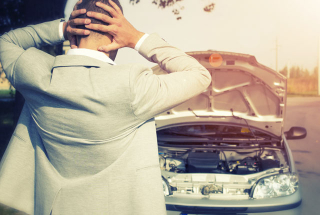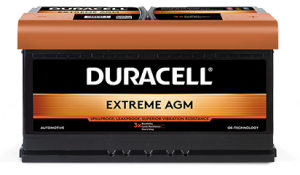NEWS & PRESS

Lead-acid batteries are a component of electromobility.
When it comes to electric vehicles, everyone first thinks of the installed high-voltage drive battery in lithium-ion technology, whose nominal voltage is usually between 288 volts and over 400 volts! The first electric car equipped with 800 V on-board voltage is the Porsche Taycan (Mission E concept). Formula E relies on a 900V system!
It is often overlooked that every electric vehicle, without exception, is also equipped with a 12V lead-acid battery. After all, no electric vehicle can do without a lead-acid battery to support and supply the on-board network. In addition to forward-looking start-ups, well-known car manufacturers such as the BMW Group also rely on lead-acid batteries for their on-board power supply. For example, the on-board network of the fully electric BMW i3 is stabilised by a lead-acid battery from Banner, which supplies the 12-volt consumers in the car.
Technically, conventional batteries are used, but depending on the electric vehicle manufacturer, EFB or AGM batteries are also used. EFB = Enhanced Flooded Battery, cycle-resistant starter battery AGM = Absorbent Glass Mat, the acid is absorbed by the glass wool and thus bound.
Replacing the on-board battery - Depending on the EV manufacturer, the backup battery must be replaced every 2-3 years during the annual service period. It is a safety-relevant component. Assuming that the high-voltage system is switched off for safety reasons at night on a motorway at 130 km/h, for example, the backup battery must continue to reliably supply the vehicle lighting! At the latest when the error message "Check ELEC system" appears in the display of the on-board computer, usually in conjunction with the red battery warning light, it is time to think about replacing the buffer battery.
Good to know - Depending on the EV manufacturer, the 12 V starter and on-board battery are always charged during the charging process of the high-voltage battery - i.e. regardless of the state of charge (SOC State Of Charge) - or only when the high-voltage battery is about 80 % charged. A look at the operating instructions of the respective electric vehicle can be helpful.
Caution - Never install a conventional wet battery in an electric vehicle that is equipped with EFB or AGM batteries as standard. EFB or AGM batteries may have to be used again! In the same housing and similar performance class. PS: Small capacity deviations or cold starts have no influence on the safe and optimal on-board current!

Often, starting problems become noticeable even before total failure. Common signs are:
- The starter (starter motor) works only sluggishly and can no longer start the engine.
- Often the noise the starter makes when trying to start the engine indicates that the battery is weakening.
- The charge indicator light begins to flicker.
- In the worst case, only a "clack" can be heard when starting the engine, triggered by the magnetic switch on the starter (starter motor). As optimists, we do not want to assume that this is the case!
How do starting problems become noticeable?
1. All lights in the cockpit remain off
Possibility 1 - Do you leave electrical devices (e.g. lights or radio) on all night? Then the battery has simply discharged. Start with a booster and charge the battery with a suitable charger.
Possibility 2 - You do not leave any devices switched on? After a quick start and charging the battery, it quickly loses power again. The battery may be defective and needs to be replaced. PS: A battery test at your trusted workshop provides reliable information about the condition of the battery and the on-board electrical system (e.g. regulator voltage).
2. Cockpit lights are on, but the starter does not rotate
Possibility 1 - The battery is too weak. Jump start and recharge with a charger. If the battery discharges again within a short time, look for hidden consumers. Troubleshooting tip: Measure the battery current with the ignition off. Pull the fuses, one by one, until you find the culprit. If this seems too complicated, go to a workshop and have it checked there.
Possibility 2 - The starter motor is stuck and the solenoid switch is not working. One symptom would be that the battery is low. The lights, fan and partners are working properly. A proper tap on the starter solenoid switch can now work wonders and usually ensure a successful engine start. In the worst case, this method only works once and the solenoid switch or the entire starter motor still needs to be replaced.
3. Cockpit lights, starter motor only starts the engine tiredly
Possibility 1 - Many short trips. The driving distance is not sufficient to fully charge the battery. Switch off non-essential power consumers. Drive longer distances - if necessary, charge your battery in an environmentally friendly manner at a charger.
Possibility 2 - The charging indicator is always flashing or lit. The regulator in the alternator could be the culprit, have it checked and replaced at the workshop if possible. Brush wear test: If the light goes out after you tap the regulator, the brushes are worn.
Possibility 3 - The V-belt squeals and the alternator cannot produce full power as a result. Tension or replace the V-belt while checking if the alternator moves slightly. In most cases, this is done by specialists in the workshop.

Besides the cold, there are 2 main factors for starting difficulties:
- a poorly performing starter battery and
- viscous engine or transmission oil
The battery has the greatest capacity at an ambient temperature of approx.+25 to +27 degrees Celsius.
The colder the temperature, the lower the battery's performance, as the chemical processes take place more slowly. The engine also prefers warm temperatures. The engine oil is thinner and friction is lower. The energy required for starting increases enormously at colder temperatures. Cold starts in winter can be made more difficult by engine oils with a high viscosity. These become increasingly viscous in hard frost and the starter (starter motor) then has a hard time getting the engine moving. Consequently, the highest starting power is needed when the battery has a much poorer capacity due to the temperature.
If you take care of the battery in winter, you can prevent annoying battery failure. Therefore, when starting from cold, switch off the radio, fan, headlights, rear window and seat heating, i.e. all additional power guzzlers, and depress the clutch before starting. To conserve the battery, the energy consumers should also be used as sparingly as possible while driving - with the exception of the dipped headlights, of course, which are particularly important in the dark winter months.
Also helpful: fully synthetic, low-viscosity, low-viscosity engine oil - please always follow the recommendation in the vehicle manufacturer's operating instructions. This oil spreads more quickly and makes the engine run more easily after a frosty night. Positive side effect: according to the manufacturer, synthetic oil can reduce power consumption by up to 25%.
Duracell tip: Stepping on the clutch pedal can make the engine cold start much easier!

In vehicles with automatic start-stop systems, two different battery technologies are basically used, depending on the energy requirement and the required vibration or cycle resistance.
- AGM (Absorbent Glass Mat)
- EFB (Enhanced Flooded Battery)
AGM battery
- AGM - Absorbent Glass Mat: the acid is absorbed into the glass fleece and thus bound.
- = VRLA - Valve Regulated Lead Acid: a valve-regulated lead-acid battery with AGM technology
- Starter and on-board power supply battery for start-stop vehicles with highest energy demand and brake energy regeneration
- for medium and luxury class vehicles
- up to 360,000 engine starts
- Auxiliary battery (BackUp) for start-stop vehicles or electric cars with highest energy demand and brake energy regeneration
AGM technology is mainly used in start-stop systems with the highest energy demand and brake energy recovery. It is primarily used in mid-range and luxury class vehicles. AGM (Absorbent Glass Mat) is a recombination battery. The AGM battery is also used in the commercial vehicle sector, especially in long-distance trucks.
A glass mat separator absorbs the acid and leaves enough pores to allow oxygen diffusion from the positive to the negative plate. At the negative plate, the oxygen combines with lead to form lead oxide. Subsequently, this lead oxide reacts with the sulphuric acid to form lead sulphate, with water as the reaction product. The charge converts the lead sulphate back into metallic lead. The result: no water loss! However, if too much gas is produced due to too high charging voltages or extremely hot temperatures, not all of the gases formed can recombine completely. The pressure in the battery rises continuously until the safety valves open.
Changing an AGM battery
If a motor vehicle is equipped with an AGM battery as standard, it is essential to replace it with an AGM battery. In the same housing and similar performance class.
PS: Slight deviations in capacity or cold start have no effect on safe starting and optimum on-board power supply!






